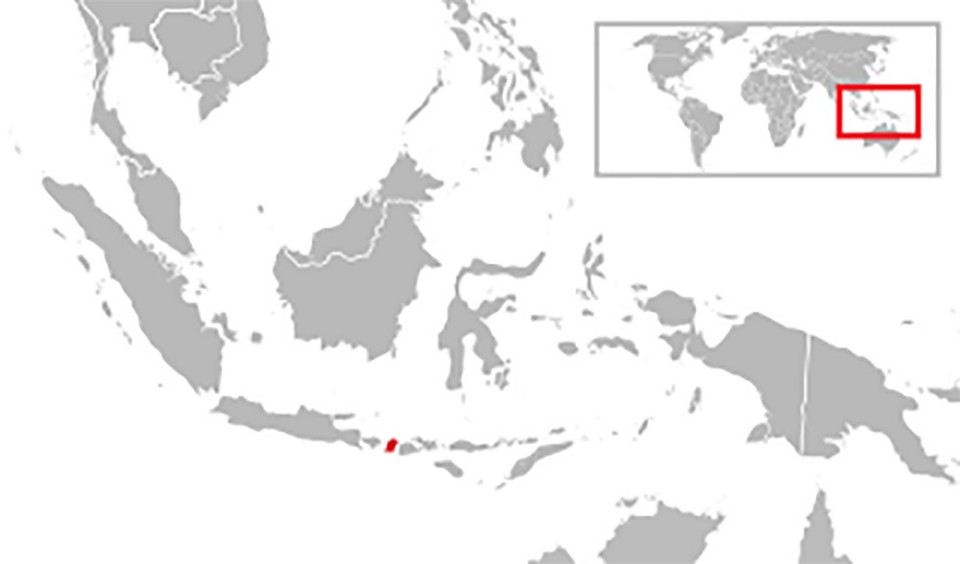Conservation efforts in the Gili Matra marine preserve are turning this protected area into a safe haven for sharks.
By Marge Segre
A whitetip shark in the waters near Lombok island. (Photo: Chika Watanabe/Flickr)
The sun is rising behind Mount Rinjani as a group of divers boards a boat to Shark Point, a spot popular among sea turtles and reef sharks on the north side of this small island in the Gili Matra marine preserve. They are going on a survey dive to record sightings of the sea creatures, with the hope this data will support the effort to establish Indonesia’s first shark sanctuary — a fully protected marine area where all commercial fishing, possession, and trade of shark species and their products are prohibited.
Around 300 species of sharks and rays can be found on the International Union for Conservation of Nature’s Red List for Threatened Species; moreover, Appendix II of the Convention on International Trade in Endangered Species of Wild Fauna and Flora includes the whale shark (Rhincodon typus), the oceanic whitetip shark (Carcharhinus longimanus), thresher sharks, two species of hammerhead, and manta and mobula rays, all of which are commonly found in Indonesia. Many marine protected areas (MPAa) have been established in the archipelago country and an export ban on shark fins was introduced in 2014. These ancient predators, however, keep being hunted to supply the illegal trade, as the ban only covers a few of the endangered species present in Indonesia and no MPA in the country specifically protects sharks.

Gili Trawangan is one of the three tiny Gili Islands off of the northwest coast of Lombok. (Map: Courtesy of Gunkarta)
Inspired by the work of the Palau Shark Sanctuary organization and the Sea Shepherd Conservation society in the island nation of Palau, where some of the toughest anti-shark-finning legislation in the world is enforced and where the planet’s first shark sanctuary was established in 2009, conservationists operating in the Gili Matra reserve hope local authorities will support their bid for a sanctuary here. Data collection is a key to this process because it provides an understanding of the abundance of species in the area and, once shared with international databases and MPA representatives, it may encourage the Indonesian government to follow Palau’s example.
As the boat approaches Shark Point, some fishing vessels can be seen rushing out of the restricted area, where they aren’t supposed to be looking for a catch. The main threat to sharks in Indonesia is still overfishing.
Indonesia has been the world’s leading shark fisher country since the early 2000s. Sharks have never represented a major livelihood in local culture; however, the growing international demand for their fins has caused a massive increase in shark catches. Elasmobranchs, the subclass of various cartilaginous fish that comprises sharks and rays, supplies a vast array of products suitable for human use. Fins are a popular ingredient in East Asian cuisine, skins are processed into leather, liver oil is used in the cosmetics industry, cartilage has different medical uses, and jaws and teeth are sold as souvenirs. The body becomes filler meat in Western countries, typically sold as part of frozen products like fish sticks.
The Gili Eco Trust, the Gili Shark Foundation, and the Gili Shark Conservation Project are collaborating locally to protect the sharks here. Their actions include data collection and a release program for sharks rescued from fishermen, which can be “adopted” through a sponsorship program aimed at raising funds for conservation activities. The Global FinPrint initiative, an effort to assess shark and ray populations, was recently implemented in this MPA, which covers approximately 3,000 hectares in the waters around the Gili Islands, and integrated into the agenda of the Gili Shark Conservation Project. While Global FinPrint completes the sampling in the same site within 2–4 weeks, the Gili Shark Conservation Project is an ongoing research-dive training program in the same MPA. Divers are trained to identify, track, and photograph individuals; they also learn to use the baited remote underwater video system which, by attracting marine creatures and catching them on film, enables the study of species diversity, abundance, and behavior. Trainees also conduct garbage clean-ups and community events about biodiversity conservation.
“All our projects have the same aims: analyzing existing management plans and trying to put data forward to changing conservation strategies, with the aim to create a shark sanctuary,” Lauren Sparks, founder of the Gili Shark Conservation Project, says aboard the boat to Shark Point. There are several plans for the protection of sharks, such as the International Plan of Action, which encourages management of shark fisheries, and the National Plan of Action, which assesses threats such as overfishing and protecting key habitats. In Indonesia, however, implementation is scarce due to a lack of resources and local involvement.
“A shark sanctuary will help ensure the fishing and trade ban is enforced, will bring in shark enthusiasts, and, most of all, more sharks,” Sparks adds before doing a backward roll entry into the water.
This story originally appeared at the website of global conservation news service Mongabay.com. Get updates on their stories delivered to your inbox, or follow @Mongabay on Facebook, Instagram, or Twitter.





